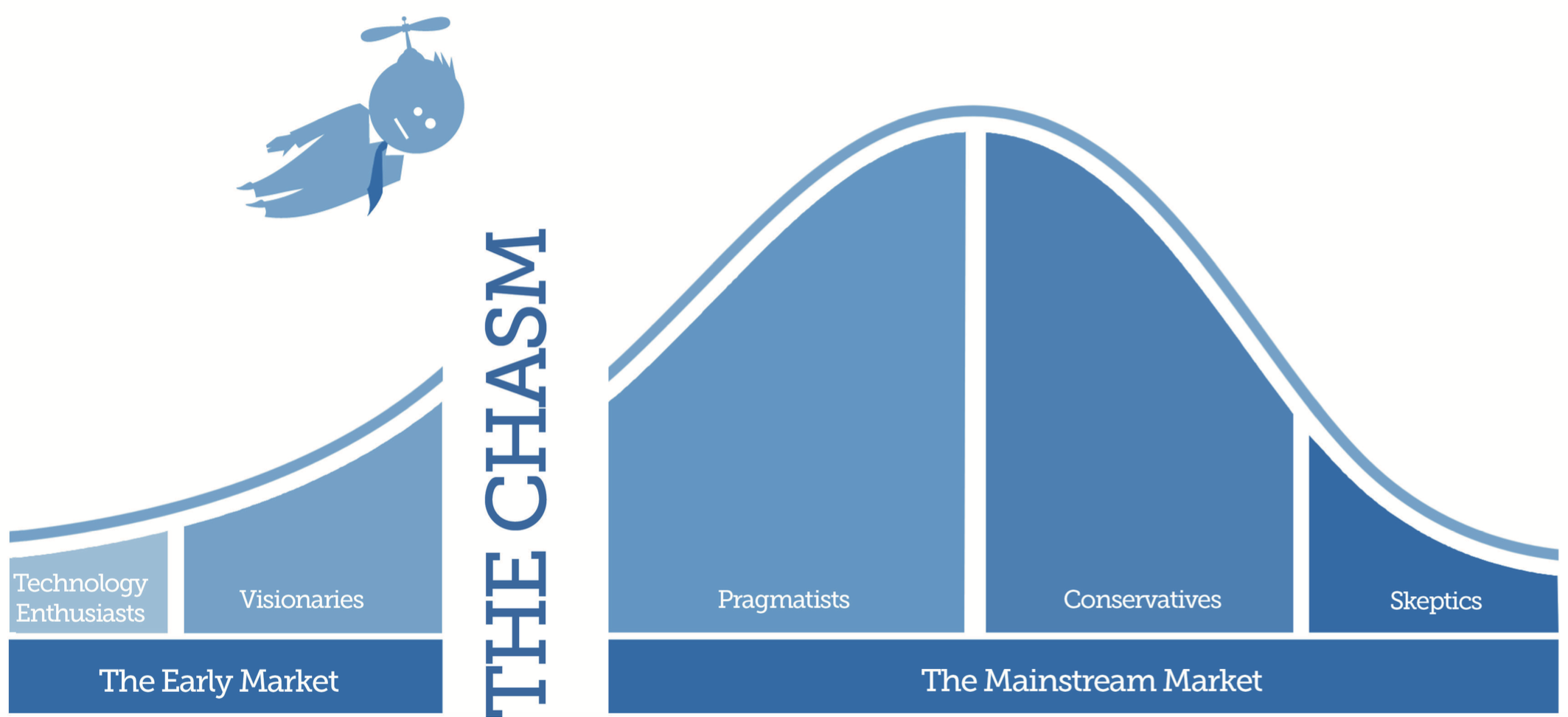How Do You Cross the Chasm and the Tipping Point? Part 1
There is only one really effective medicine against risk aversion and that is references and testimonials from customers that look exactly like your potential customers.
I assume you are familiar with the “Crossing the Chasm” phenomenon.
If you are familiar with the concept, then you also know that you are in one of two categories:
- You have crossed the chasm
- You have not crossed the chasm
If you have crossed the chasm then you are in one of two categories:
- You have passed the tipping point
- You have not passed the tipping point
Crossing the chasm
The chasm is not the same for all companies. Basically “the width” of the chasm depends on two variables:
- How recognized is the problem you solve?
- How big is the risk in testing your solution?
If you have a solution to a problem or an opportunity that customers don’t know they have, then you face the well known “missionary” challenge. You will have to activate the need first, before you can introduce your solution. That’s very tough and basically only Early Market Customers will listen to you. Mainstream Customers are not interested in dealing with problems and opportunities that they do not even recognise and are definitely not motivated to listen to some “obscure company claiming that change is required”.
Lowering the risk
Mainstream Customers are characterized by very low risk thresholds. They’ll go to extremes to avoid anything risky.
Mainstream Customers have the exact same business challenges and problems as Early Market Customers, but they don’t do anything about these challenges and problems until there are relatively “risk free” solutions available. In this context “risk free” means tested and tried by other companies and generally available in packaged formats from recognized suppliers.
People makes decision (companies do not)
So far I have been talking about companies, but in the real world purchase decisions are made be individuals and teams of individuals. Even in very conservative companies you may have people representing an Early Market mentality. If the opportunity/problem is recognized and the risk is low, then we may narrow the chasm and make the jump more easily.
Lowering the price
Don’t jump to the conclusion that lowering the price to zero will remove the risk. You need to assess the entire risk scenario associated with implementing your solution (also in the test scenario). Often the price you charge is only a small fraction of the cost associated with deciding for and implementing your solution and hopefully it is only a tiny fraction of the value the customer will get.
Here are some of the risk elements that you may have to deal with:
Complex purchase decision
Implementing your solution requires the consent of more that one individual. For information technology products and services it often means that you need a yes from line management as well as a yes from the IT department. Cloud-based SaaS formats can help circumvent the notoriously conservative and over-loaded IT department, but you may still have to deal with more than one decision maker.
Cross organisational involvement
It requires the involvement of more functional units in the organization of which some don’t benefit from the solution.
The typical scenario is when an information technology solution requires resources in the IT-department, e.g. when the solution needs to “talk to” other systems.
Strategic nature
Your solution has a strategic nature. It means that if your solution fails the customer will suffer heavy inconveniences or direct losses. Top management will have to be involved in the choice of vendor.
Value is situational
The value of your solution is highly related to how the customer implements and uses the solution. The technical implementation may be done 100% correctly, but the users don’t use the solution and derive the benefits it could provide.
If your solution fits this description then you need to list all the stakeholders and identify all the concerns they may have before you can develop strategies for lowering each of these risk elements. Don’t let Early Market Customers, who are prepared to deal with these issues as they appear, fool you into believing that all customers are like that.
The #1 medicine against risk aversion
The proven strategy is to focus on a well defined market segment so that Mainstream Customers in the same segment will recognize the problem/opportunity of your leadership position with Early Market Customers and will start talking to you.
Thus, there is only one really effective medicine against risk aversion and that is references and testimonials from customers that look exactly like your potential customers. And we are not talking about one in Siberia, one in Sicily and one in Greenland. And we are not talking about a bicycle factory in Beijing, a porcelain factory in Monaco and BMW in Munich. We are talking about customers with whom your potential customers can easily identify and then talk to. The more your Early Market Customers look like the customers you address in the Mainstream Market, the easier your jump across the chasm will be.











